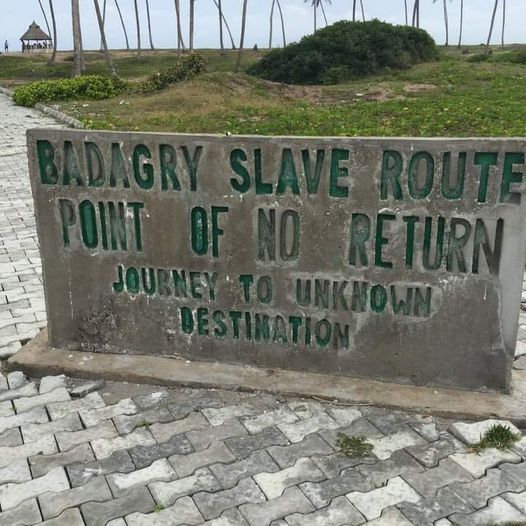Badagry, a coastal community in Lagos State, prides itself as cradle of civilization in Nigeria. Believed to have been founded in 1425 A.D, the town derived its name from the fusion of the name of its founder, a famous farmer known as Agbedeh and the word “Greme”, which means farm in Ogu (Egun) language. Originally, the name of the town which is situated between the city of Lagos, and the border of Republic of Benin at Seme was said to have evolved from the dual corruption of Agbedegreme (which means Agbedeh’s farm in “Ogu” language) to Agbedagari and from Agbedagari to Badagry by Yoruba settlers and European slave traders respectively.
Badagry is a monarchy headed by the Wheno Aholuship, a kingship head by the Akran of Badagry and his seven white cap high chiefs. The white cap chiefs administer the eight quarters which Badagry is divided into. These divisions are Ahovikoh, Boekoh, Jegba, Posukoh, Awhanjigo, Asago, Whalako and Ganho. These quarters and the families that ruled them played prominent roles in the slave trade business with the Europeans and Brazilians.
𝙒𝙖𝙞𝙩! 𝘽𝙚𝙛𝙤𝙧𝙚 𝙮𝙤𝙪 𝙘𝙤𝙣𝙩𝙞𝙣𝙪𝙚 𝙧𝙚𝙖𝙙𝙞𝙣𝙜,
𝑷𝒍𝒆𝒂𝒔𝒆 𝒌𝒊𝒏𝒅𝒍𝒚 𝒔𝒉𝒐𝒘 𝒖𝒔 𝒔𝒐𝒎𝒆 𝒍𝒐𝒗𝒆 𝒃𝒚 𝒇𝒐𝒍𝒍𝒐𝒘𝒊𝒏𝒈 𝒖𝒔 Gist In Kwale
Around 1600, the ancient city of Badagry was reputed as a thriving community for trade in salt. But this legitimate trade soon gave way to the obnoxious slave trade and for its first four hundred years of existence, slave trade dominated all other commercial interests in Badagry. The town became host to European slave traders led by George Freemingo, a Portuguese slave merchant who came to Badagry around 1660s. By 1740 Badagry had become a thriving town for slave trade. It grew to an important commercial centre flourishing on the export of slaves through the creeks and lagoon.
Effort to stop the obnoxious trade received a major boost when the treaty for the abolition of slave trade was signed in March 1852 between England and Badagry chiefs. Some cannons of war were donated to the chiefs to be placed at the coastal area to fight other European countries that were still coming to get slaves. However, the trade continued illegally and the export of slaves steadily increased. The Brazilians became the major slave merchants during this period. However, in 1888 the last ship left Badagry to Brazil and this marked the end of the trade in Badagry, Brazil and around the world.
From the 1840s, following the suppression of slave trade Badagry declined significantly and would later become a major site of Christian missionary work. Christianity was first preached in Nigeria in Badagry in 1842 by Rev Thomas Birch Freeman, who equally celebrated the first Christmas in Nigeria the following year. The site where Christianity was first preached then is now known as the Agiya Tree Monument. The 160 ft tall Agiya tree was felled by a heavy windstorm in 1959. To underscore the significance of this site, the Agiya Tree Monument was set up on the same parcel of land where the tree stood.
The first educational system in Nigeria as a British colony started in Badagry where the first primary school was established by the Wesleyan Mission (Methodist Church) in 1843 and named Nursery of Infant Church which later became St. Thomas’ Anglican Nursery and Primary School, founded by Rev. Golmer of the Church Missionary Society (CMS) in 1845 and operated inside the first storey building in Badagry.
A number of other historical facilities including educational institutions later sprang up in Badagry until 1955 when the missionaries left the town unceremoniously due to a misunderstanding between them and the natives. In 1863, Badagry was annexed by the United Kingdom and incorporated into the Lagos Colony. In 1901 it became a part of Nigeria.


